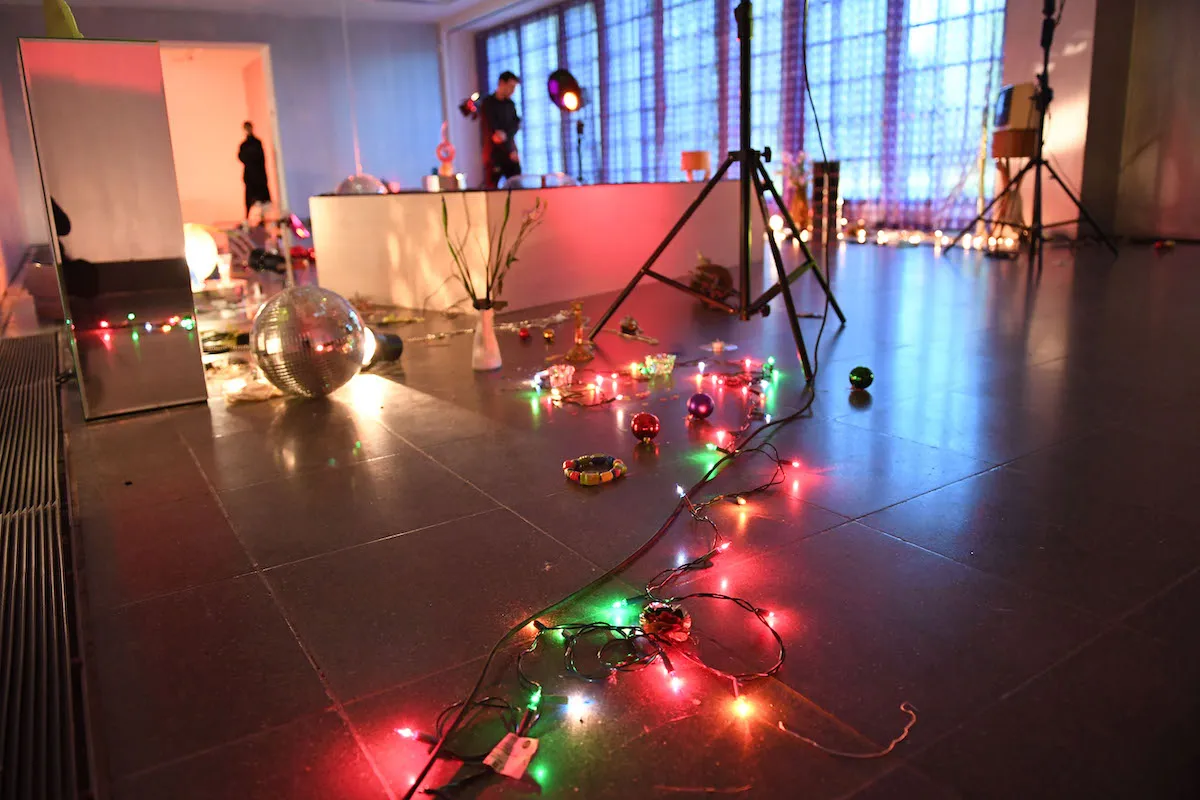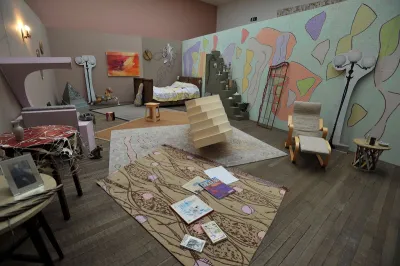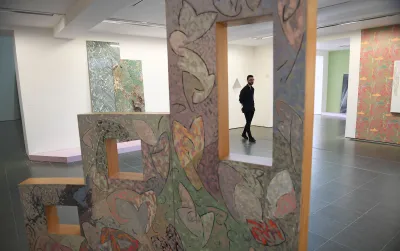
Marc Camille Chaimowicz, an artist whose unclassifiable installations trotted the line between art and design with aplomb, has died at 77. His death was announced on Thursday by Brussels’s WIELS Contemporary Art Centre, which do not specify a cause.
Chaimowicz’s installations have received due praise for the ways they imploded divisions between public and private, masculine and feminine, art and non-art. He often included work by other artists, and they frequently resembled interiors in which one could lounge.
These installations, which initially received fame in 1970s England, found a new audience in the new millennium following shows held at Zurich’s Migros Museum für Gegenwartskunst, London’s Serpentine Galleries, and New York’s Jewish Museum. Hans Ulrich Obrist, artistic director of the Serpentine Galleries, once said that Chaimowicz had become “an urgent artist in the age of the internet, as boundaries become more porous.”
Chaimowicz’s breakout work, the 1972 installation Celebration? Realife Revisited, took the form of a room that contained strings of lights, a disco ball, and more. It looked like the aftermath of a party, and Chaimowicz kept the festivities going by restaging the piece at various points and inviting viewers to congregate within it. When he initially exhibited it at Gallery House in London, he invited people over for coffee with the installation—and the artist himself even slept in it at night.
Celebration? Realife Revisited did not look Minimalism, Conceptualism, or any other dominant style of the era. It was neither a sleek sculpture nor an ideas-driven piece, and while it could be said to contain a performative element, the work was not exactly performance art either.
Although Chaimowicz’s work of the era did not contain an explicitly feminist sentiment, he did seek to break down gender binaries as well. He said he was engaged in the process of “the discerning of a secret femininity in the most male of men,” an inquiry that led him to incorporate design objects that would have been considered anathema to Minimalism’s machismo. And though his work was not overtly queer either, he frequently paid homage to Jean Cocteau, a gay impresario associated French modernism whom Chaimowicz praised for being “highly involved in the sociability of practice, in commissioning, in exchange, in collaboration.”
Chaimowicz tended to deflect when he was asked questions about his biography. Portraits of him are hard to come by—one submitted for a 2023 Art Newspaper interview took the form of an image of his darkened reflection in a glass window—and he could be evasive his family history. A journalist for T: The New York Times Style Magazine continually pressed Chaimowicz for details about his father to little avail.

Marc Camille Chaimowicz was born in 1946 in Paris. His father, a Polish Jew, and his mother, a French Catholic, never discussed World War II, despite it having been waged not long before he was born. Chaimowicz, his parents, and his two sisters left for the UK when he was 8, and he would remain there for the entirety of his career.
At 16, he went to the Ealing Art College before attending the Camberwell School of Art. After that, he did a postgraduate program at the famed Slade School of Fine Art. He arrived as a painter, but he proceeded to burn all his canvases after participating in the 1968 student protests in Paris.
Unlike many of his Slade colleagues, he found himself attracted to French painters like Fragonard, Vuillard, and Bonnard, all of whom are celebrated for their usage of soft, elegant colors. As he fell hard for their work, Chaimowicz also volunteered at a Lyon fabric studio, instilling in him an interest in the decorative arts.
That interest would remain with him for years to come: his installations often featured tables, chairs, wallpapers, and more, often exhibited by Chaimowicz in the same context as works by agreed-upon greats of art history, from Andy Warhol to Alberto Giacometti. These exhibitions looked like houses and galleries simultaneously. And in that way, Chaimowicz destabilized what could be considered “high” and “low” art.

He undertook a number of even less categorizable projects, including one for his London gallery Cabinet, which commissioned a building to be designed by its artists in the Vauxhall neighborhood of London. Chaimowicz’s contribution was a set of windows with irregularly jagged panes. His apartment was located on an upper floor of the building.
Artists several generations Chaimowicz’s junior found themselves fascinated by him. One was Lucy McKenzie, who collaborated with him on several occasions. She once asked Chaimowicz which organization he’d most like to produce a work for. His answer was not a museum. “Woolworth’s would be interesting,” he said. “Or even Marks & Spencer.”
